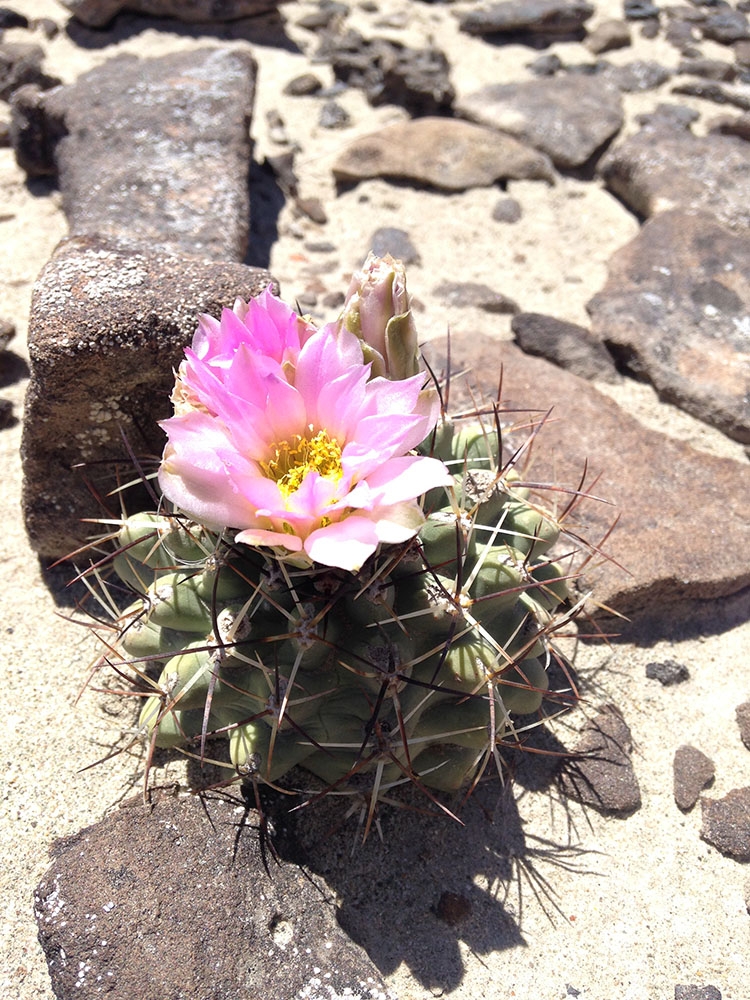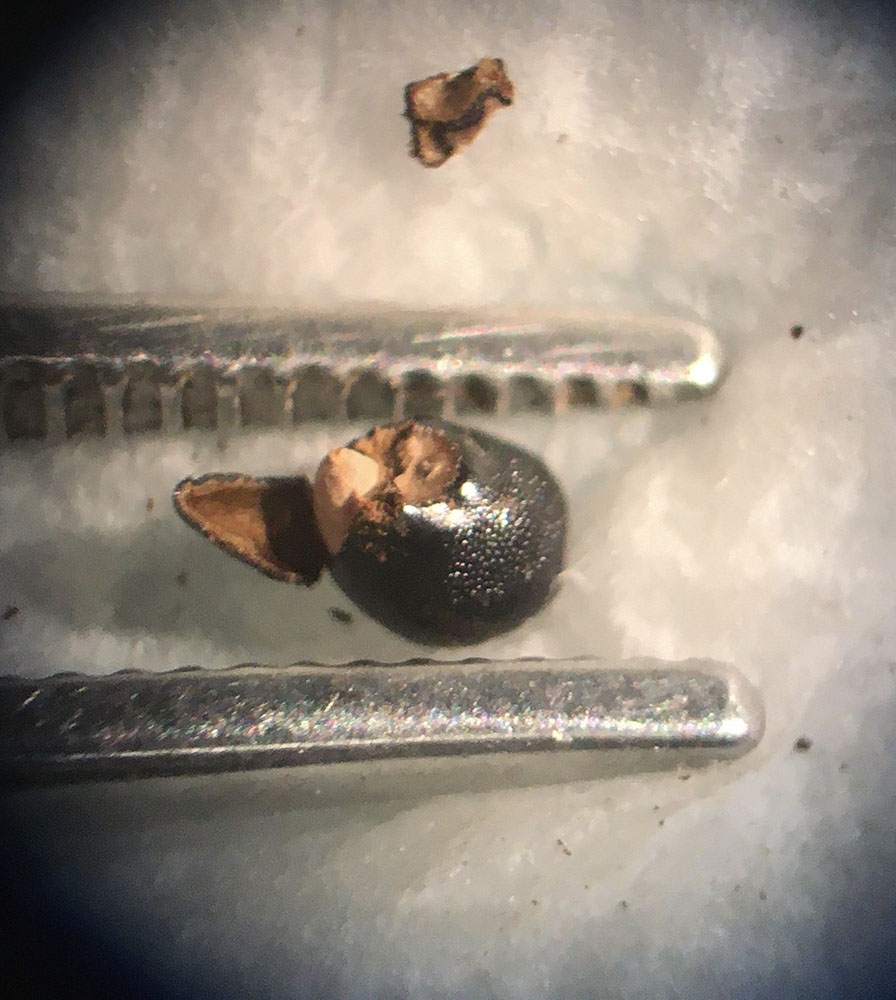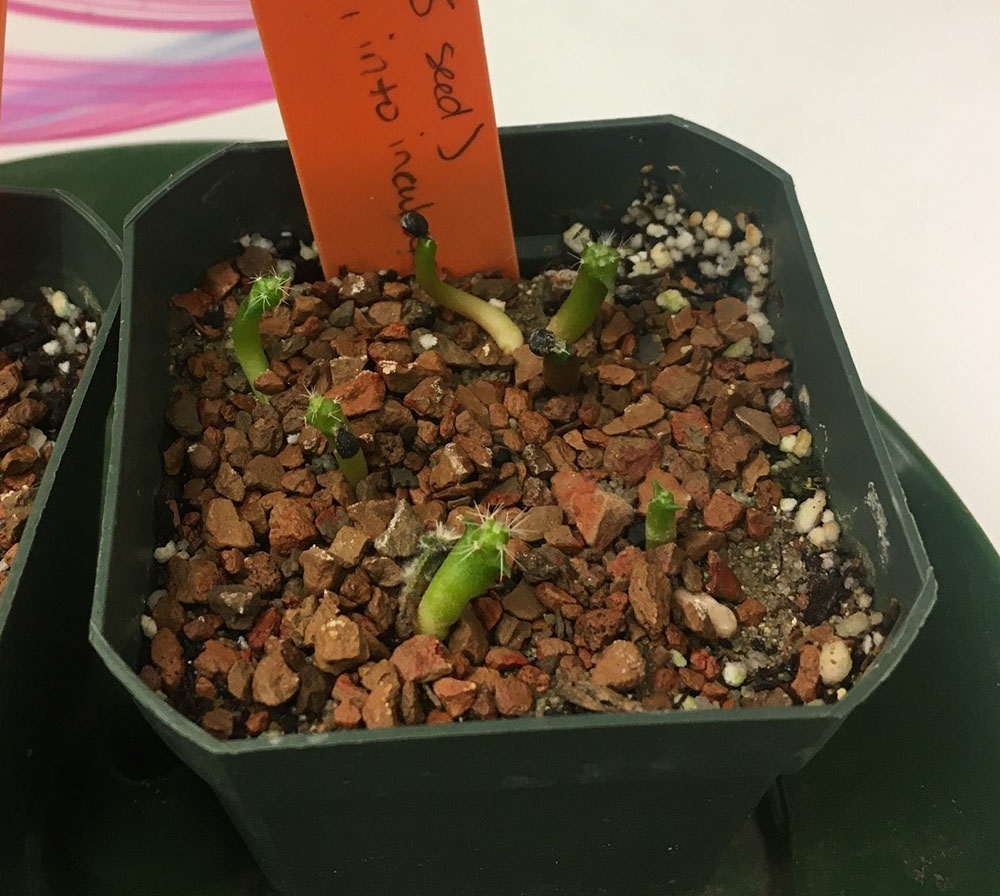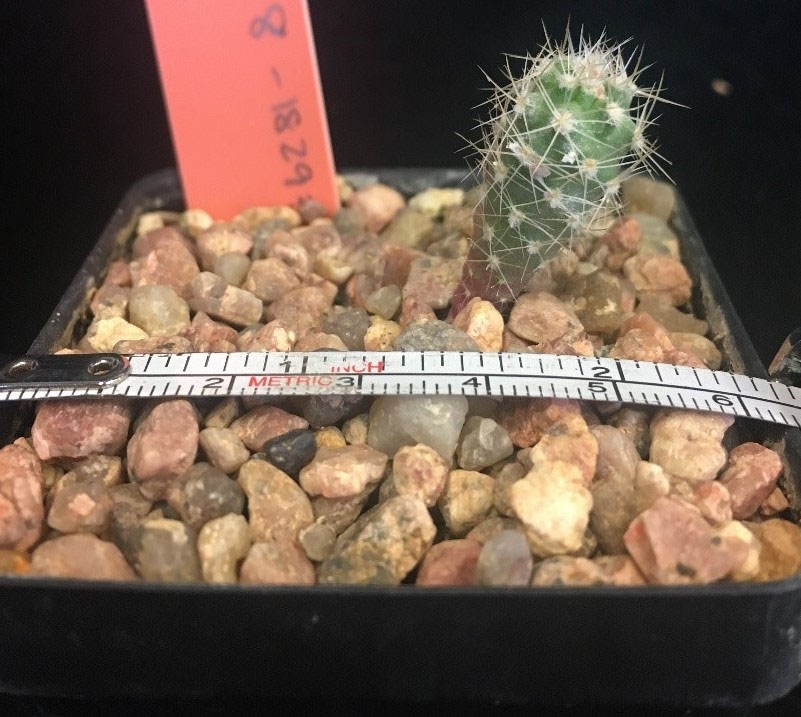The Thrills of Finding and Growing Cacti
It is on the brisk days of winter such as these that I long for the summer days I used to spend out in the field collecting data on Colorado rare plants. In my opinion, very few things beat the thrill of traveling to the backcountry to search and document the existence of incredible plants only seen by few. That is, very few experiences could not beat this thrill until I started trying to grow them.
This story starts back when I was merely an intern in a government office. Before becoming a horticulturist at the Gardens, I was an intern at the Bureau of Land Management (BLM) Colorado State office. Although the office is stationed close to Denver, I would often find myself wandering the dry, desert hills of the Colorado Western Slope. I was drawn to the rare, threatened Sclerocactus glaucus, the Colorado hookless cactus.
The Colorado hookless cactus is endemic to Colorado, meaning it only grows here. Being a small, cylindrical cactus found in high-elevation deserts of western Colorado, it is a cactus that can easily be overlooked. Unfortunately, it often is by ranchers and those extracting oil and gas from our public lands. I spent many hours playing thrilling games of “I Spy…a little cactus!” on my weeks in the field. The Research & Conservation Department also plays this game every year, searching and recording on plots that are not monitored by the BLM. I usually won the game of “I Spy,” finding dime- and quarter-sized cacti, but occasionally, I got lucky and was rewarded with the brilliant pink blooms of the larger ones.
When I started working at the Gardens full time, I was grandfathered into a special germination project, partnering with the U.S. Fish and Wildlife Service. No, it was not for Colorado’s own hookless cactus, but of her close sister, Sclerocactus wetlandicus, a.k.a. Uinta Basin hookless cactus (a rare Utah endemic). They are so similar, in fact, they used to be grouped under the same name but recently were placed into their own species due to their genetic differences.
Anyone who grows cacti knows it is difficult to germinate and cultivate them in greenhouse settings. This hookless cactus is no different; the seeds required precise, physical means of gently chipping some of the seed coat to help break seed dormancy and achieve germination (seed dormancy is a nifty adaptation many plants have evolved to make sure they only germinate during favorable environmental conditions). After the tedious task of chipping seed coats, a task nearly as monotonous as searching for quarter-sized cacti in the field, I was rewarded all the same: wonderful cacti seedlings appeared before my eyes; a prize that rivaled finding for them in the field.
All the same, growing them on to a suitable size has been a slow process, but nevertheless steady. A year into starting this project, the seedlings are still small, and yet, the thrill and amazement of growing such a special plant never ceases over all this time. It is truly an honor to be growing plants like this (and many others) in the Gardens’ greenhouses.
Gallery





Add new comment